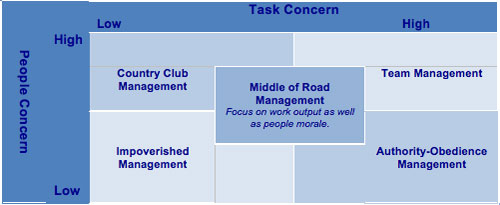The Dunham and Pierce Leadership Process Model doesn’t necessarily seek to define leadership, but it does the job indirectly. This model addresses all of the key elements that play a role in leadership, and helps the manager to understand how each part affects the other parts of the equation. Leadership will never be simple, but using this model is a good way to ‘get your head around’ the various moving parts and hopefully bring it into better focus in your mind.
 |
Learn the Four Factors
According to Dunham and Pierce, there are four factors that play a role in the leadership process. Those four are the Leader, the Followers, the Context, and the Outcomes. Naturally, the Leader is the person in charge of a project or team, regardless of what their title may be. That person may be referred to as an owner, a manager, a V.P., or any other title that confers power and responsibility. The important thing is that they are the person who a group of others answer to, and it is their performance that we are worried about with this model.
The Followers are then, obviously, the people who are being led. Generally, these will be employees of the company in question. Most commonly, the Followers for a specific manager fall within a group or division of the company. The performance that the Leader is able to coax out of the Followers will largely be responsible for the outcomes that are achieved.
The Context is an interested element to this model, and one that is skipped over in some other various leadership models and discussions. Context refers to the circumstances under which the Leader is managing his or her team. Whether it is a project that will run for a predetermined length of time, or simply employees working on a day to day basis, the context of leadership play an important part in what style of management is going to be most successful.
Lastly, the Outcomes portion of the puzzle refers to the results of any project or task that has been worked on by the Followers under direction of the Leader. For example, if a well-defined project has been worked on for two months, the success or failure of that project will be considered an Outcome. Above all else, leaders tend to be judged on their Outcomes because they usually have the most direct influence over the bottom line. If you are a manager within an organization, it is probably your Outcomes that you spend most of your time concerned with.
 |
It’s All Connected
If this model has one overreaching theme that you should take away, it is that all of the aspects of leadership are interconnected in one way or another. It is obvious that your actions as the Leader will affect your followers, but it is more complicated than that. Conversely, the actions of your Followers are likely to affect you as a Leader and your management style. If you are able to learn from your team and how their actions dictate the Context and the Outcomes, everyone will have a better chance at success. The leadership model, then, is not so much a linear one as it is a circular one.
So what does this have to do with management from a practical sense? It should serve as notice that everything done within the context of a leadership situation is important, and it all comes around in the end in one form or another. Things that are done to help the team and empower the individuals on a team can serve to improve future outcomes, while any negativity is likely to manifest in unwanted ways. Taking a holistic approach to management can be powerful when it comes to guiding a team toward long term success.
Some of the Highlights
This model has plenty to teach leaders and managers in a variety of settings, but some of the most important lessons can be found below.
• Grow relationships within the team. Since this model of leadership is circular in nature, it only makes sense that growing relationships well help everyone perform better. When the relationships are strong from the top down, communication will benefit and the team should work more efficiently as a whole.
• Let people do what they do best. This is key for any leader, no matter what context they are working in. When people are able to spend time working on projects that they feel comfortable with and that match up with their skill sets, they tend to be happier (and perform better). When leaders fails to consider the skills of their people, it should be no surprise the results lag.
• Offer feedback. This point goes along with the point regarding relationships among the team. Feedback is valuable because it helps to steer the members of the team in the right direction, in a positive way. Opening the lines of feedback helps the Followers learn what is expected from them, and also gives them an opportunity to provide feedback to the Leader – which can be invaluable.
• Act Ethically and Honestly. The circular nature of leadership dictates that it is vitally important to act with a high degree of honesty on a regular basis. When deceit creeps into the system, it is likely to spread and have a negative effect throughout the organization.
Leadership is complicated and sometimes messy, but the Dunham Pierce Leadership Process Model does a good job of highlighting the key points and identifying how they all affect one another. For the leader who is trying to keep a variety of different interests happy throughout the term of a project, this model can help to sort things out and keep them moving in the right direction.






